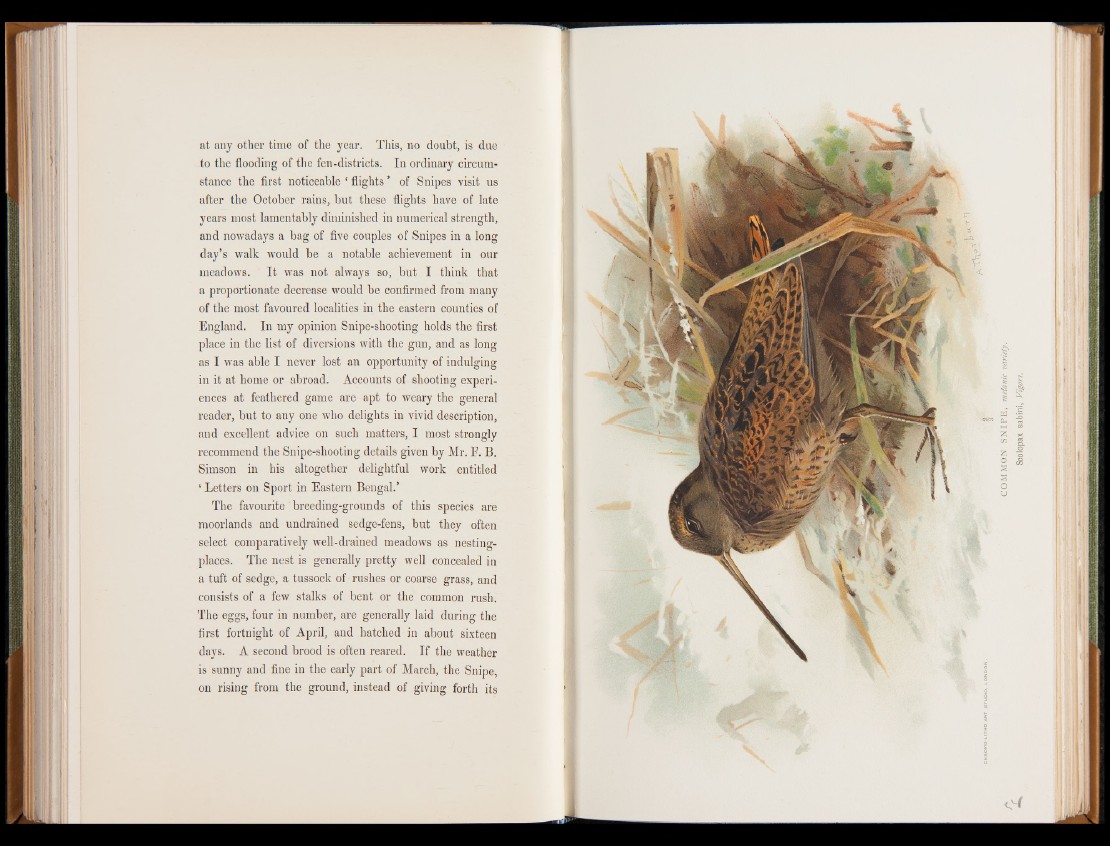
at any other time of the year. This, no doubt, is due
to the flooding of the fen-districts. In ordinary circumstance
the first noticeable f flights | of Snipes visit us
after the October rains, but these flights have of late
years most lamentably diminished in numerical strength,
and nowadays a bag of five couples of Snipes in a long
day’s walk would be a notable achievement in our
meadows. It was not always so, but I tbink that
a proportionate decrease would be confirmed from many
of the most favoured localities in the eastern counties of
England. In my opinion Snipe-shooting holds the first
place in the list of diversions with the gun, and as long
as I was able I never lost an opportunity of indulging
in it at home or abroad. Accounts of shooting experiences
at feathered game are apt to weary the general
reader, but to any one who delights in vivid description,
and excellent advice on such matters, I most strongly
recommend the Snipe-shooting details given by Mr. F. B.
Simson in his altogether delightful work entitled
‘ Letters on Sport in Eastern Bengal.’
The favourite breeding-grounds of this species are
moorlands and undrained sedge-fens, but they often
select comparatively well-drained meadows as nesting-
places. The nest is generally pretty well concealed in
a tuft of sedge, a tussock of rushes or coarse grass, and
consists of a few stalks of bent or the common rush.
The eggs, four in number, are generally laid during the
first fortnight of April, and hatched in about sixteen
days. A second brood is often reared. If the weather
is sunny and fine in the early part of March, the Snipe,
on rising from the ground, instead of giving forth its
C O M M O N S N IP E , melanic variety.
Scolopax sabini, Vigors.